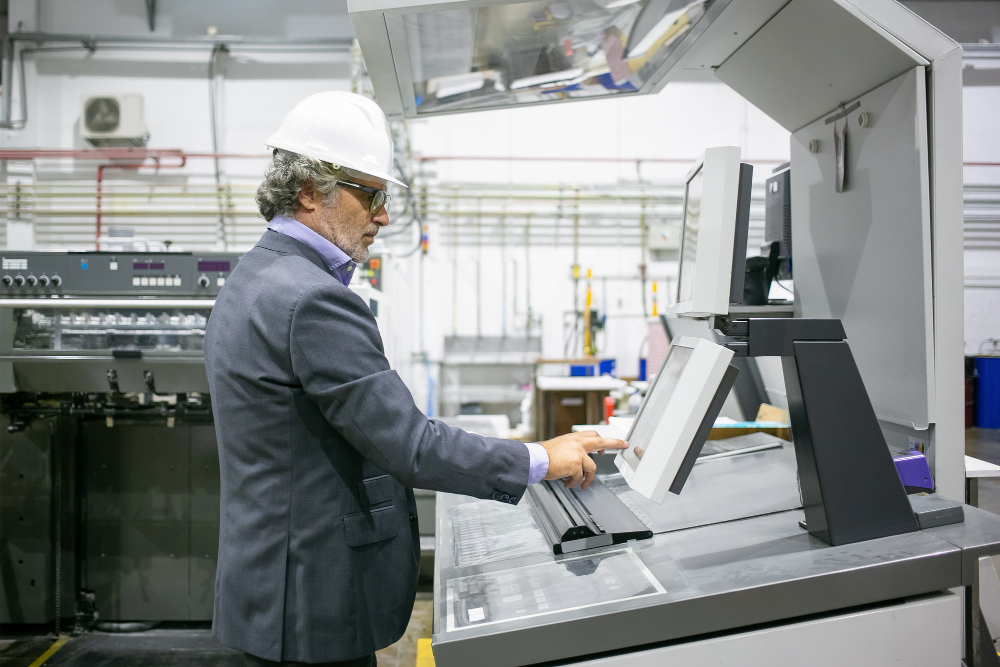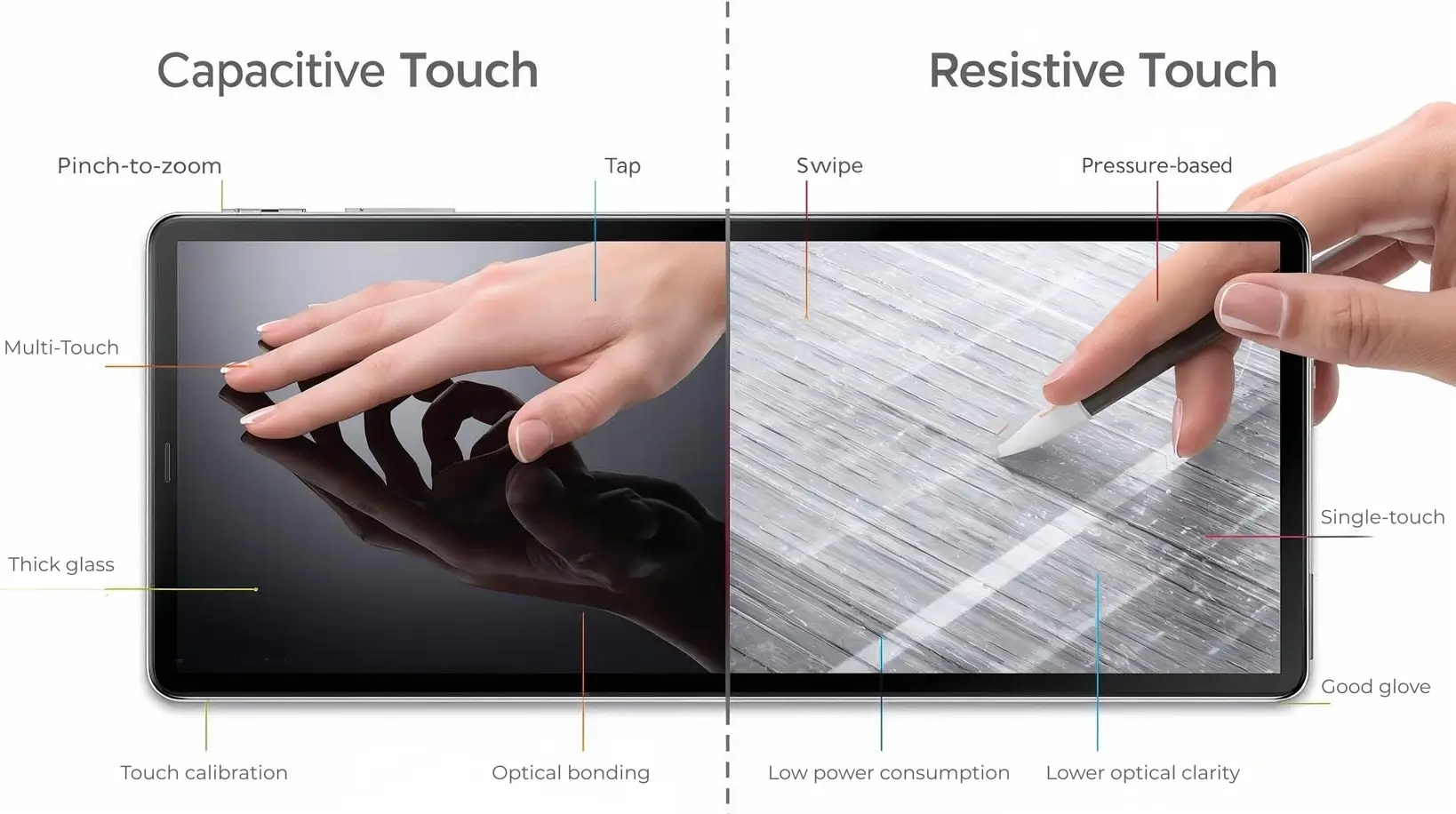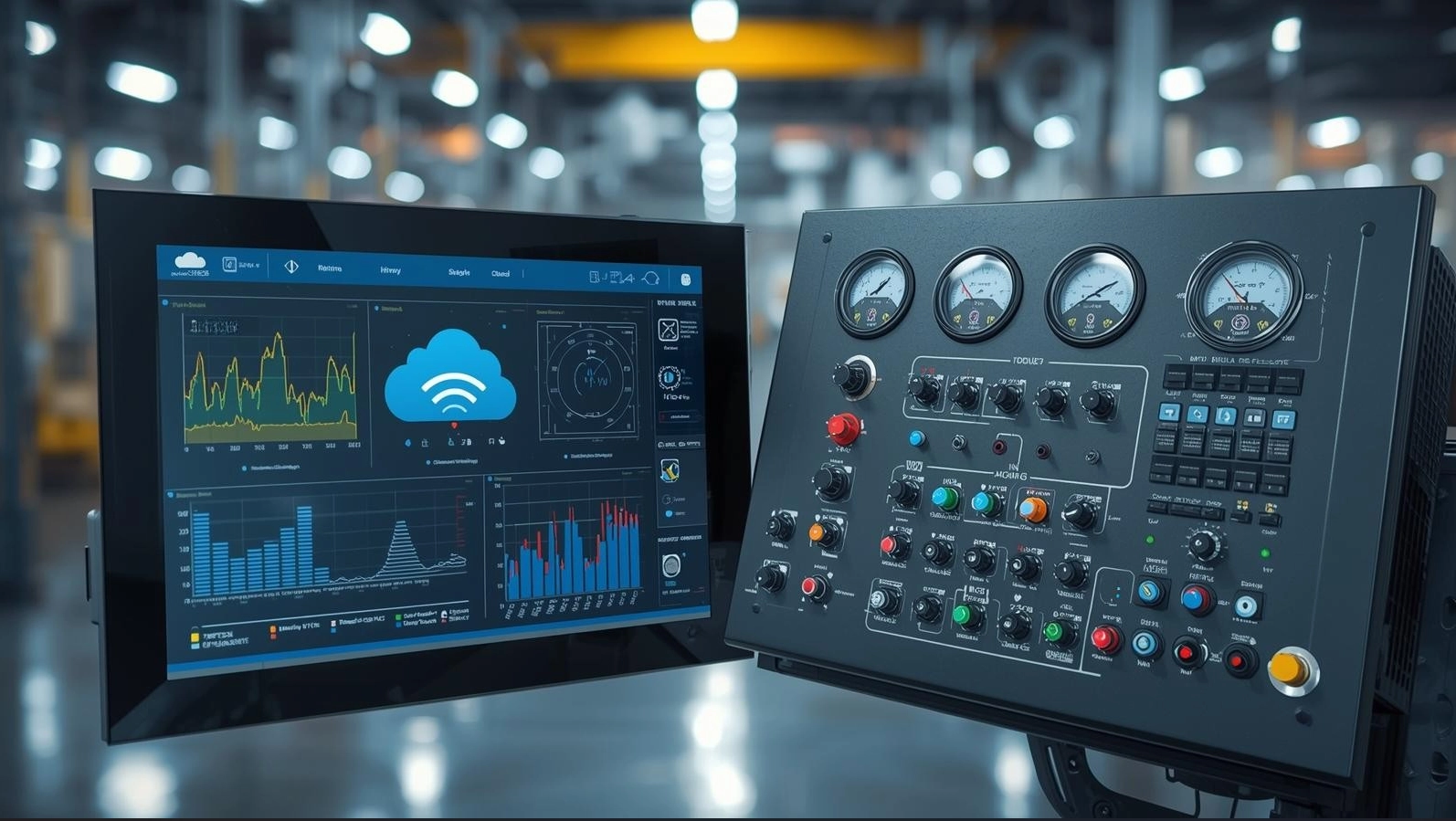Introduction
Dans les environnements industriels où la poussière, les vibrations, les fluctuations de température et le fonctionnement 24 heures sur 24 et 7 jours sur 7 sont des réalités quotidiennes, les PC industriels (IPC) sans ventilateur offrent une combinaison inégalée de fiabilité, de durabilité et de performance. Leur conception sans ventilateur élimine l'un des points de défaillance mécanique les plus courants : les pièces mobiles. Cet avantage architectural, associé à des processeurs Intel® avancés et à des composants robustes, garantit des performances ininterrompues, même dans des environnements difficiles.
Qu'elles soient déployées sous forme de PC embarqués sans ventilateur, de Box PC sans ventilateur ou intégrées dans des panels PC tactiles, ces solutions offrent une puissance de calcul robuste et une stabilité à long terme. Elles sont devenues essentielles pour les applications critiques telles que l'automatisation pilotée par l'IA, les infrastructures IoT, les villes intelligentes et les systèmes de contrôle industriel alignés sur l'industrie 4.0.
Cet article explore les avantages des PC industriels sans ventilateur, compare les facteurs de forme courants, met en évidence les technologies clés et présente des applications réelles dans lesquelles les solutions sans ventilateur sont nettement plus performantes que les systèmes traditionnels.
Pourquoi les PC industriels sans ventilateur sont-ils indispensables aux applications industrielles modernes ?
Quelles sont les performances des PC embarqués sans ventilateur dans les environnements industriels difficiles ?
Les environnements industriels sont généralement impitoyables : usines remplies de poussière, systèmes de transport à fortes vibrations, températures extrêmes dans les installations énergétiques et applications extérieures sujettes à l'humidité. Les PC industriels sans ventilateur sont spécialement conçus pour résister à ces conditions sans compromettre la fiabilité ou les performances.
L'absence de ventilateurs dans un ordinateur sans ventilateur signifie qu'aucune pièce mobile n'attire la poussière ou les contaminants dans le système. Les ordinateurs embarqués sans ventilateur bénéficient d'un refroidissement passif, utilisant des dissipateurs thermiques soigneusement conçus et des châssis robustes pour dissiper efficacement la chaleur. Ces conceptions garantissent des performances optimales même à des températures de fonctionnement allant de -20°C à 70°C, ce qui les rend idéaux pour les systèmes d'automatisation, de vision industrielle et de contrôle.
Principaux avantages :
- Fonctionnement silencieux: L'absence de ventilateurs signifie des environnements sans bruit, ce qui est essentiel pour les espaces médicaux, les laboratoires et les espaces publics.
- Réduction de la maintenanceL'absence de remplacement des ventilateurs dans un PC industriel sans ventilateur réduit le risque de surchauffe dû à l'encrassement.
- Cycle de vie étendu: Sans usure mécanique, les systèmes offrent une plus grande longévité le temps moyen entre les défaillances (MTBF).
- Grande souplesse de déploiement: Convient pour Rail DIN, montage mural, montage en rackou des applications embarquées compactes.
Ces caractéristiques expliquent pourquoi les industries préfèrent les PC embarqués sans ventilateur aux solutions de bureau traditionnelles dans les environnements difficiles.
🔗 Explorer notre Panel Mount Fanless Touch Panel PC conçu pour les applications industrielles nécessitant un fonctionnement robuste et sans entretien.
Comment choisir entre les PC embarqués sans ventilateur, les Box PC et les Panel PC ?
Quelles sont les différences dans leurs applications et configurations industrielles ?
Les PC industriels sans ventilateur sont disponibles dans plusieurs facteurs de forme, chacun répondant à des besoins industriels spécifiques. Le choix du type approprié dépend de l'environnement de l'application, des exigences de performance et de l'espace disponible.
| Facteur de forme | Application idéale | Caractéristiques principales |
|---|---|---|
| Box PC sans ventilateur | Edge AI, Digital Signage, IoT Infrastructure | Compact, modulaire, polyvalent |
| PC embarqué | Automatisation des usines, robotique, contrôle | Le PC industriel compact et robuste est conçu pour être monté sur rail DIN, ce qui le rend idéal pour les environnements industriels. |
| Panel PC | Les systèmes HMI, d'interface machine et SCADA sont souvent alimentés par des ordinateurs industriels sans ventilateur pour des raisons de fiabilité. | L'écran tactile intégré à l'ordinateur industriel sans ventilateur est classé IP pour une durabilité dans divers environnements. |
Box PC sans ventilateur
Idéal pour les environnements nécessitant un déploiement flexible et une expansion modulaire. Souvent utilisé dans l'informatique de pointe, la signalisation numérique et les cadres IoT.
PC embarqués sans ventilateur
Optimisé pour les panneaux de contrôle d'automatisation, la robotique et les environnements à espace restreint où le montage sur rail DIN est préférable.
PC à panneaux
Combinez les fonctionnalités informatiques et IHM dans un panneau frontal étanche conforme à la norme IP65, idéal pour les ateliers de fabrication, l'industrie alimentaire et les salles blanches.
🔗 En savoir plus Solutions d'automatisation industrielle alimentés par des PC sans ventilateur pour des systèmes de contrôle et de surveillance robustes.
Les technologies de base des PC industriels sans ventilateur : Pourquoi les processeurs Intel® sont importants
Comment le CPU, la RAM et le stockage SSD influencent-ils les performances dans les environnements robustes ?
Au cœur des PC sans ventilateur modernes se trouvent les processeurs éco-énergétiques et haute performance d'Intel® et d'AMD. Il s'agit notamment des options Atom®, Core™ i5, Core™ i7 et Xeon®, choisies en fonction des exigences des charges de travail, allant de l'IHM à usage léger à l'inférence IA à haut calcul.
Spécifications de base :
- CPU : Quadricœur 2,5 GHz pour le multitâche, les charges de travail d'IA et l'analyse en temps réel dans un PC industriel.
- RAM : évolutive de 4 Go à 64 Go pour prendre en charge différentes charges de calcul dans les applications PC industrielles.
- Stockage : Les disques SSD industriels garantissent l'intégrité des données en cas de vibrations et de variations de température.
- Interfaces E/S : USB 3.0, Ethernet, DisplayPort, ports série et Wi-Fi pour une connectivité avec les systèmes modernes et anciens.
Le refroidissement passif garantit que ces composants fonctionnent dans des plages de température optimales sans ventilateur, ce qui améliore la fiabilité à long terme.
Pourquoi Intel® est important :
- Un soutien de premier plan pour AI, vision industrielleet informatique de pointe charges de travail.
- Feuilles de route du cycle de vie étendu pour la sécurité à long terme de la chaîne d'approvisionnement.
- Compatibilité éprouvée avec les écosystèmes logiciels industriels.
Quelles sont les principales applications des PC industriels sans ventilateur dans les domaines de l'IA, de l'IoT et des villes intelligentes ?
Comment ces PC permettent-ils l'industrie 4.0 grâce à l'informatique de pointe et à la connectivité ?
Alors que les industries adoptent l'industrie 4.0, les PC industriels sans ventilateur servent de nœuds essentiels dans les stratégies informatiques décentralisées. Leur durabilité, leurs performances et leur taille compacte les rendent idéaux pour l'edge computing, où le traitement des données en temps réel à la source est crucial.
Principaux domaines d'application :
- Fabrication: Inspection pilotée par l'IA, contrôle robotique, maintenance prédictive.
- Transport: Systèmes de circulation, gestion de flotte, signalisation numérique.
- L'énergie: Télésurveillance, systèmes SCADA, réseaux intelligents.
- Villes intelligentes: Surveillance, kiosques publics, contrôle de l'environnement.
- Le secteur de la santé utilise de plus en plus les ordinateurs industriels pour améliorer la gestion des patients et le traitement des données.: Imagerie diagnostique, interfaces d'équipements de laboratoire.
Tableau : Applications industrielles et PC sans ventilateur recommandés
| L'industrie | Système recommandé | Focus sur l'application |
|---|---|---|
| Fabrication | PC embarqué | Automatisation, robotique, contrôle |
| Transport | Box PC sans ventilateur | Signalisation numérique, contrôle des véhicules |
| L'énergie | PC embarqué robuste | SCADA, télésurveillance |
| Les initiatives de ville intelligente s'appuient souvent sur des systèmes intégrés pour améliorer l'infrastructure et les services urbains. | Panel PC / Box PC | La surveillance et l'analyse des données sont des éléments essentiels des ordinateurs industriels modernes utilisés dans les applications de sécurité. |
| Soins de santé | Panel PC | IHM, systèmes de diagnostic |
La connectivité robuste de ces systèmes (Ethernet, Wi-Fi, SIM, USB) garantit une intégration transparente dans les infrastructures existantes et futures.
Comment configurer un PC sans ventilateur pour une efficacité maximale dans les environnements difficiles ?
CPU, RAM, stockage, et considérations de connectivité pour les ingénieurs
La bonne configuration détermine les performances d'un PC sans ventilateur dans des scénarios industriels spécifiques. Les ingénieurs doivent évaluer :
Composantes essentielles :
- Processeur: Intel® Core™ i5/i7 ou Atom® pour des performances évolutives.
- RAMRAM : 4 Go pour l'IHM, jusqu'à 64 Go pour les charges de travail d'IA dans un système embarqué adapté aux applications industrielles.
- Stockage: SSD pour la résilience, capacité basée sur les besoins en données.
- Interfaces: Ethernet, USB 3.0, Wi-Fi pour la connectivité ; Série/COM pour les systèmes existants.
Considérations environnementales :
- Large température de fonctionnement La plage de température de fonctionnement : (-20°C à 70°C) garantit la fiabilité des performances de l'ordinateur industriel sans ventilateur.
- Boîtiers IP65/IP67 pour la protection contre l'humidité et la poussière
- Résistance aux chocs et aux vibrations MIL-STD normes
La configuration correcte de ces systèmes garantit des performances optimales et une longue durée de vie, même dans les conditions suivantes environnements difficiles.
Pourquoi les PC industriels sans ventilateur sont-ils plus performants que les PC traditionnels en termes de fiabilité et de cycle de vie ?
Comment la conception sans ventilateur réduit-elle la maintenance et améliore-t-elle la longévité ?
Les PC traditionnels tombent prématurément en panne dans les environnements industriels en raison de la dégradation des ventilateurs de refroidissement, de l'accumulation de poussière et des dommages causés par les vibrations. Les PC industriels sans ventilateur atténuent ces risques grâce à des conceptions scellées et à refroidissement passif.
Principaux avantages en termes de fiabilité :
- Pas de pièces mobiles: Élimine les pannes de ventilateur, réduit le MTTR (temps moyen de réparation).
- Les boîtiers étanches sont essentiels pour protéger les ordinateurs industriels sans ventilateur des contaminants environnementaux.: Protection contre la poussière, l'humidité et les éléments corrosifs.
- Fonctionnement silencieux: Idéal pour les environnements sensibles au bruit.
- Cycle de vie étendu: Dépassant souvent 7-10 ans Le MTBF est une mesure importante pour évaluer la fiabilité des ordinateurs industriels sans ventilateur.
Ces avantages se traduisent par une réduction du coût total de possession, une diminution de la fréquence de maintenance et une augmentation de la durée de fonctionnement.
🔗 En savoir plus sur Au-delà du système d'information (BIS) et comment nous fournissons des solutions informatiques industrielles sans ventilateur qui ont fait leurs preuves dans l'industrie.
Conclusion : Pourquoi les PC industriels sans ventilateur constituent-ils un investissement intelligent pour l'informatique industrielle ?
Les PC industriels sans ventilateur se sont imposés comme une norme de fiabilité dans les environnements difficiles où les ordinateurs de bureau ou de montage en rack traditionnels échoueraient. Leur architecture robuste, leur souplesse de déploiement et leur économie de cycle de vie supérieure les rendent indispensables dans les applications d'IA, d'IoT, d'automatisation et d'industrie 4.0.
Qu'il s'agisse de PC embarqués sans ventilateur, de Box PC sans ventilateur ou de PC à écran tactile, ces solutions fournissent aux industries une infrastructure stable, évolutive et à l'épreuve du temps pour relever les défis de l'informatique moderne.
Grâce à des partenariats de confiance et à une innovation technologique permanente, BIS s'assure que ses clients bénéficient des dernières avancées en matière d'informatique industrielle sans ventilateur afin de répondre aux demandes en constante évolution des industries mondiales.



